This fact sheet provides information about the residents of the City of Whitehorse.
Age
On 30 June 2024, the Estimated Residential Population in Whitehorse was 183,462.
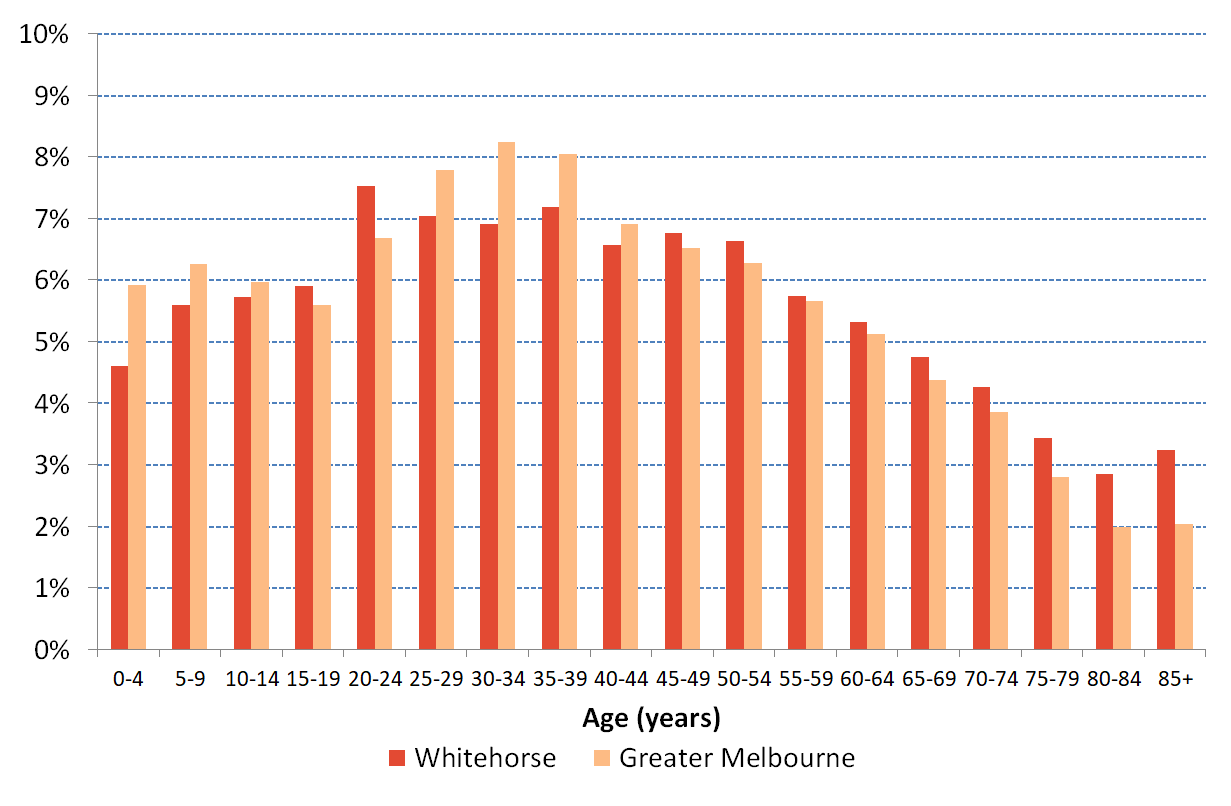
In 2021:
- The median age was 39 years. In Greater Melbourne, this figure was 37.
- Twenty-four per cent of residents were aged 60 plus; this compares with 20 per cent for Greater Melbourne.
- Ten per cent of residents are aged 75 years and over. This compares with 7 per cent for Greater Melbourne and 8 per cent for Victoria.
- Whitehorse has more residents aged 20-24 than Greater Melbourne.
- The biggest growth between 2016 and 2021 in Whitehorse was in the 70-84 age group, which experienced a 12 per cent increase. This was followed by growth in the 35-49 year age group (5.4 per cent increase).
- Box Hill and Burwood (suburbs) have larger concentrations of residents aged 18-29 (30 per cent and 29 per cent respectively compared with 17 per cent for the municipality).
- Nineteen per cent of the population are aged under 18 years.
Gender
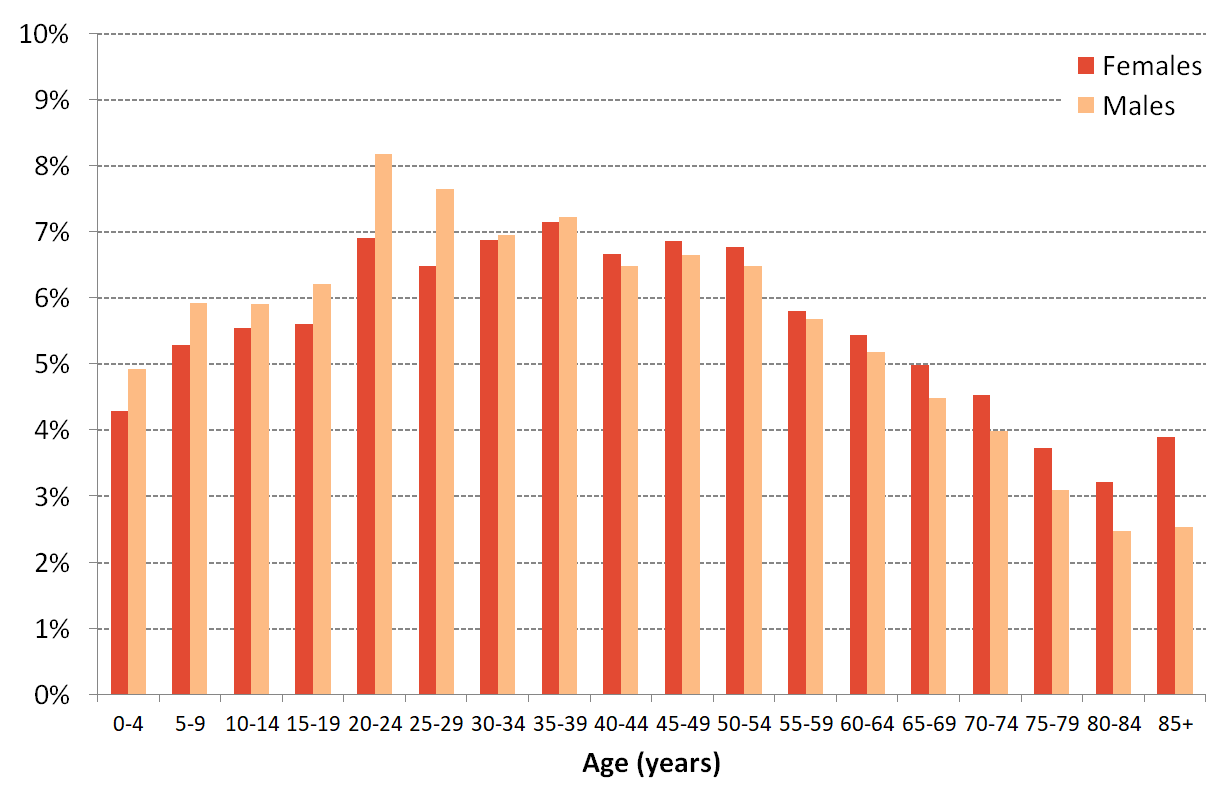
In 2021:
- Fifty-two per cent of the population were female.
- There were more males than females in all of the five year age increments under 30 years (apart from 10 to 14 year olds). There are more than 600 more males aged 20-24 than females in the municipality.
- For every five year age increment from 30 years there are more females than males. This is particularly so for the older age groups; there are 43 per cent more women than there are men aged 75 plus.
Diversity
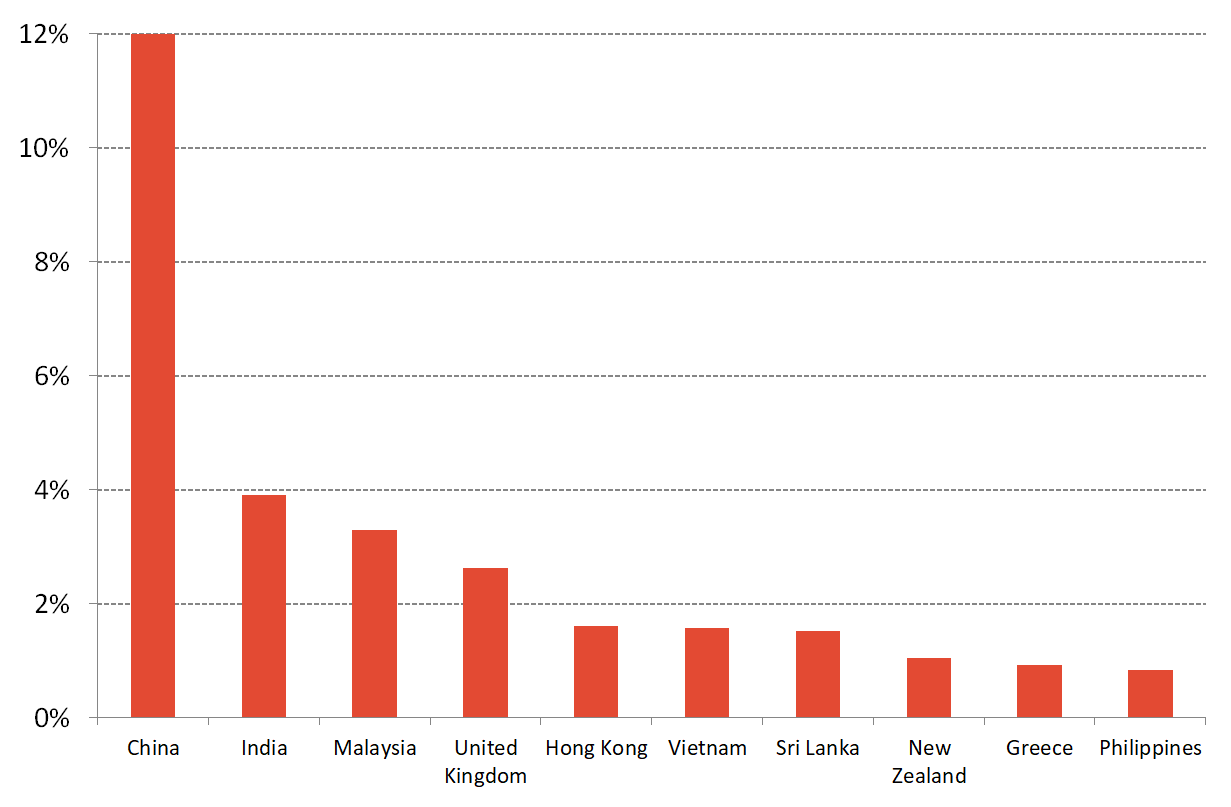
In 2021:
- Whitehorse had a greater proportion of residents born overseas (41.5 per cent) compared to Greater Melbourne (35.7 per cent).
- A total of 13 per cent of all residents were born in China. This represents an increase of 18 per cent on 2016 (at 11.5 per cent). In 2011 the Chinese population was 7.3 per cent.
- India accounted for the second greatest proportion of overseas born residents at 3.9 per cent, followed by Malaysia at 3.3 per cent.
- The United Kingdom decreased in proportion from 3 per cent in 2016 to 2.6 per cent in 2021.
- Across Australia, the United Kingdom was the leading overseas country of birth, followed by India, China, New Zealand, the Philippines and Vietnam.
- In Box Hill around 30 per cent of residents were born in China (29.5 per cent).
Households
In 2021, there were 65,115 households in Whitehorse. Figure 4 depicts these by type.
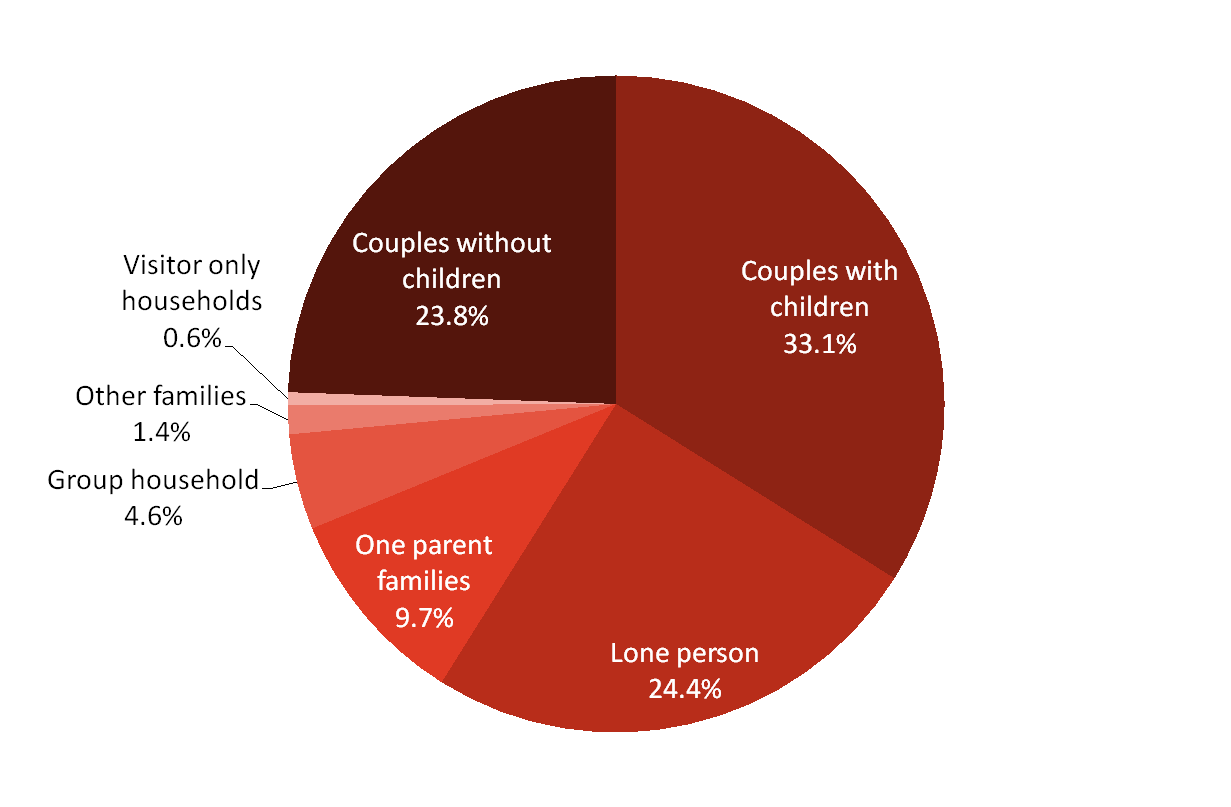
In 2021:
- The most commonly occurring household type comprised couples with dependents (33.1 per cent).
- Nearly one quarter of households comprised of couples with no children (23.8 per cent) and lone person households (24.4 per cent).
- The average household has 2.6 people, consistent with the average for Greater Melbourne.
Income
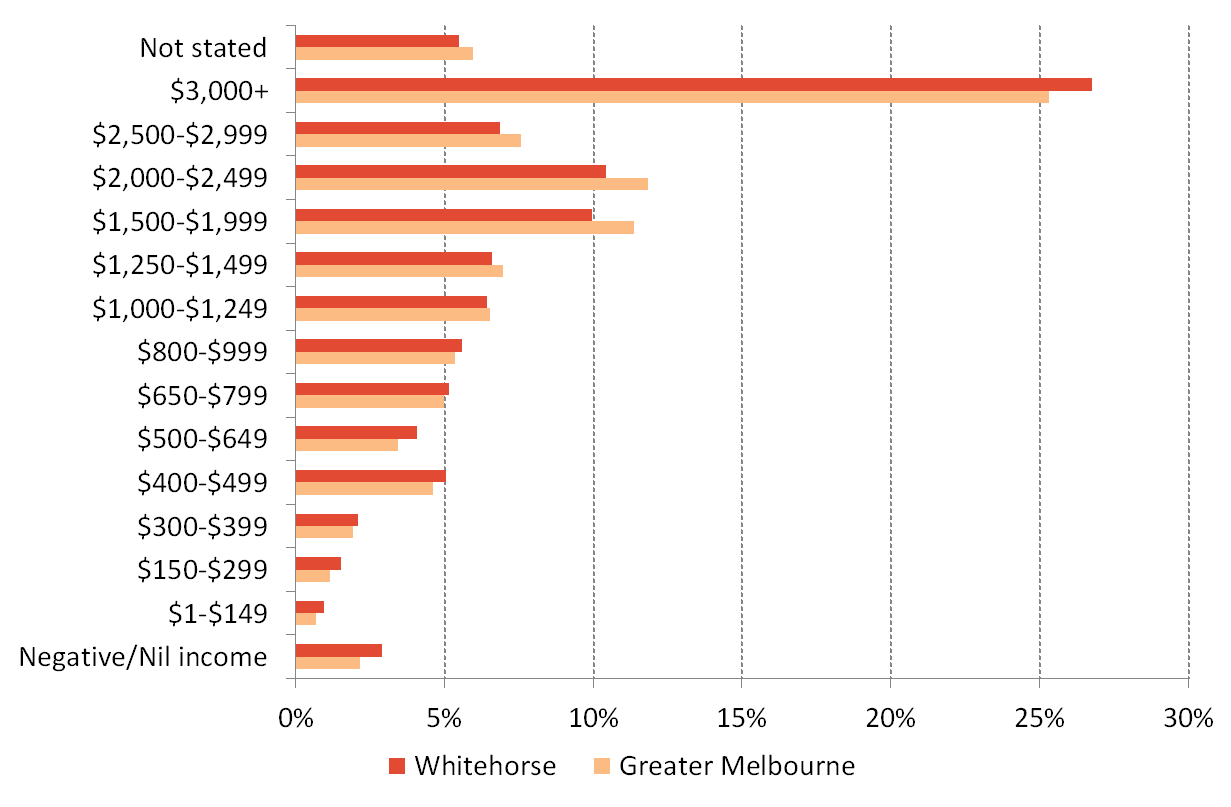
In 2021:
- Whitehorse had a slightly higher proportion of low income households relative to Greater Melbourne, with 7.5 per cent of households earning less than $400 per week, compared with 6 per cent.
- Whitehorse had a higher proportion of high income households relative to Greater Melbourne, with 26.8 per cent of households earning $3,000 or more per week, compared with 25.3 per cent.
- The median weekly household income is $1,850. For Greater Melbourne this is $1,866.
Education
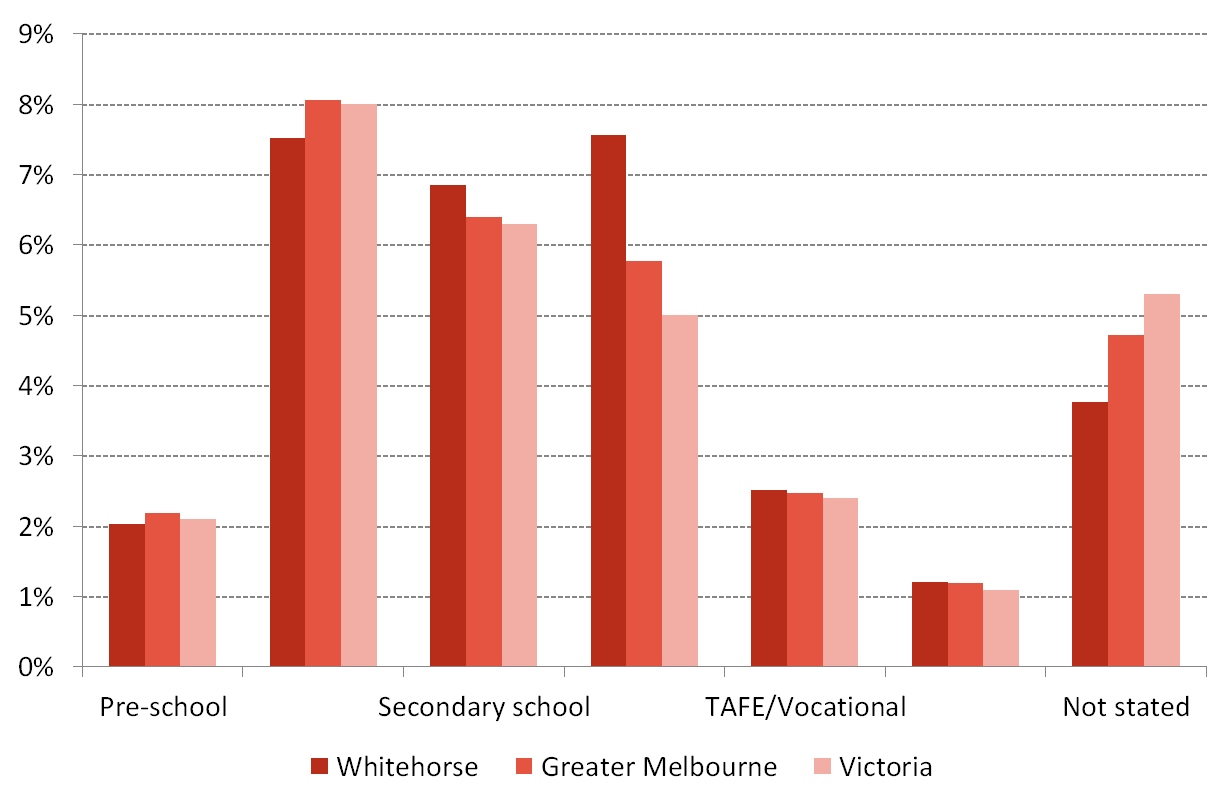
In 2021, 27.7 per cent of people in Whitehorse were attending an education institution. A total of 7.5 per cent were in primary school and 6.8 per cent were in secondary school. Significantly 10.1 per cent attended a tertiary or technical institution, which is higher than Greater Melbourne (at 8.2 per cent) and Victoria (7.4 per cent).
Indigenous Population
According to the 2021 Census, 523 persons or approximately 0.3 per cent of the population in the City of Whitehorse identify as Indigenous. This compares with 0.7 per cent for Greater Melbourne, 1 per cent for Victoria and 3.2 per cent for Australia.
It is important to note that often there is underreporting of the number of Aboriginal and/or Torres Strait Islander people in the community.
Links
For more information about demographics please refer to:







